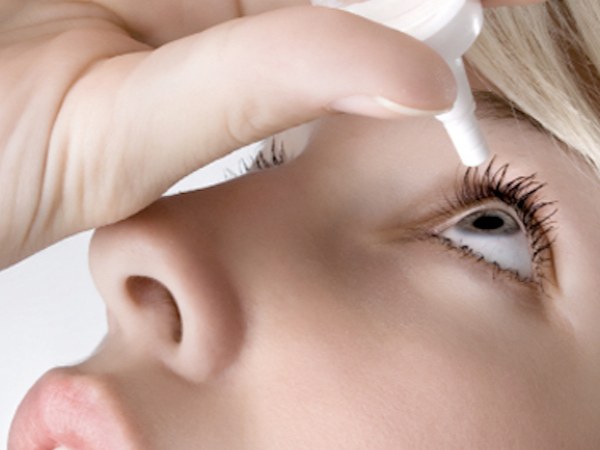Eye allergies can cause red, itchy, dry eyes and sometimes, even watery eyes (excessive production of the watery component of your tears as a protective mechanism for dry eyes).
Persistent dryness, scratchiness, burning sensation and foreign body sensation are common symptoms of dry eyes.
Dry Eyes Causes
Dry Eye Syndrome
Special glands called meibomian in the eyes produce tears which contain many different essential elements, including oils. These oils prevent tears evaporation.
Dysfunction of the meibomian glands, reduced oiliness, not enough production of tears or excessive evaporation of the tears can cause dry eye syndrome.
Treatments: With consulting your doctor and using special treatments that clear the blocked meibomian glands, can actually restore their normal function.
Natural Aging Process
Many women during menopause have dry eyes symptoms. Also, many medications such as antidepressants, birth control pills and blood pressure medicines can cause dry eyes.
Treatments: If medications are the cause of dry eyes, discontinuing or switching the drugs actually can resolve the dry eye problem. Sometimes switching to a different type of medication is the best solution, because it can lessen the dry eye symptoms, while keeping the needed treatment. First, consult with your doctor for the best solutions.
Home and Work Environment
The air conditioning or staring at your computer for a long period, can dry out your eyes. Or simply, leaving in a dusty and dry or windy climate.
Treatments: If the environment is the problem, try to reduce exposure to sun, dust or wind. Wearing glasses is the best solution when going out. Sometimes, cold temperatures may be another environmental cause of dry eyes, so wearing safety glasses when you’re outside will be very helpful.
In your home or work office, add an air cleaner or filter, which can clean out all the dust and harmful particles from the air, or you can use a humidifier adds that can moisturize the dry air.
Contact Lens
Another cause is long-term contact lens wear. In fact, dry eyes are the most common problem among those who wear contact lens.
Treatments: If your contact lens dry out your eyes, you may need to switch your contact lens to a different lens or wear your lenses for fewer hours each day, until the dry eye problem clears up.
Eye Allergies
The most common allergens that cause dry eyes are pollen, mold, house dust, smoke, yeast and pet dander. Allergens are very harmless substances that cause problems and can lead to allergic reactions.
Eye allergies also can be caused by using certain cosmetic products or eye drops, including artificial tears which contain preservatives and they are used for treating dry eyes. They are also food allergies or insect allergies, which are not so severe causes as airborne allergens.
Allergies Treatments for Dry Eyes
Depending on your case, allergies can be prevented by avoiding allergens. To get relief from your dry eye allergies and itchy, red eyes, you can take these few approaches and treatments:
Avoiding allergens
The best approach to control your eye allergy is to limit your exposure to the allergens you are sensitive to, even it is especially hard to do if you are allergic to pollen, dust or the climate conditions of your area.
If you are allergic to pollen, when comes the days when the levels of pollen are increased, try to stay home as much as possible. Also, it is important to use high quality of air conditioner filter that can entrap common allergens. Replace the filters more frequently.
When you do go outdoors during allergy season, especially autumn, always wear protective sunglasses to help protect your eyes from pollen and ragweed. Remember, when driving, always close the windows of your car.
Eye drops and other lubricants
With consulting your doctor, you may need to use artificial tears, which are lubricating eye drops that may ease the dryness and scratchy feeling. Some artificial tears contain specific tear deficiencies, such as lack of sufficient lipids. Remember to avoid using certain artificial tears that may contain preservatives as they can also cause allergic reactions.
It is also recommended to avoid all the cosmetic products that may contain preservatives, especially if you are applying those products near your eyes, such as vaseline, antibiotic eye ointments, makeup or cleaning products that contain strong fragrances.
Another treatment for dry eyes is called Lacrisert, which is a tiny insert that contains a lubricating ingredient (hydroxypropyl cellulose). The insert should be placed inside the lower eyelid. This insert continually releases lubrication for the eye during the day.
Regular antihistamine medicine
The antihistamine medicine treatment which doesn’t contain preservatives can actually relieve allergy symptoms. Also, try to place cool compresses over your eyes or use conventional treatments such as lid scrubs, saline solution washes or better nutrition that can help with both allergies and dry eye symptoms.
If you live with animals or in a dusty environment, it is a very good idea to use a washable, hypoallergenic pillow, or a clean towel and put it on top of your pillow. Make sure you wash the pillow covers often.
Nutrition and hydration
For treating dry eyes, it is highly recommendable a special nutritional supplements and diet. Recent studies have found that supplements containing omega-3 fatty acids can decrease dry eye symptoms.
Fish such as sardines, cod, salmon, herring are excellent sources of omega-3s. Also, flaxseed oil helps to relieve dry eyes.
Because mild dehydration often makes dry eye problems worse, it is important to drink more water, especially during hot, dry and windy weather. Drinking more water also can reduce the symptoms of dry eye syndrome.
Generally, women need 91 ounces of water and men about 125 ounces to stay hydrated, each day. About 20 % of the water your body needs comes from the food, while the rest comes from the fluids you drink. The best choices for beverages are water, 100 % fruit and vegetable juices and milk.

